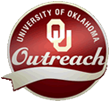2011 ED Programs American Indians and Alaska Natives
This Department of Education website provides a list of federal funding programs for American Indians and Alaskan Natives.
ESSA and Native American, Alaska Native, and Native Hawaiian Students
This is second in a series of posts on ESSA’s implications for student subgroups. Read the first in the series: What Will ESSA Mean for English Learners? A large body of research supports the idea that Native American, Alaska Native, and Native Hawaiian students thrive in instructional environments that honor their unique cultural and linguistic heritages. Federal education policy is catching on. The Every Student Succeeds Act (ESSA) promises unprecedented opportunities and funding for incorporating our nation’s many indigenous cultures and languages into public schools serving Native students.
Impact Aid Program
This document offers an overview of the Impact Aid Program.
Indian Education Funding
The Indian Education Act of 1972 provided funding for special programs for Indian students attending public schools on and off reservations. The current version of the Indian Education Act is Title VI of the Every Student Succeeds Act of 2015. This document provides an overview of the Title VI program.
Johnson O’Malley Program
This Bureau of Indian Education website features information about the Johnson O'Malley (JOM) program, which is authorized by the Johnson-O'Malley Act of 1934, and the implementing regulations are provided in Part 273 of Title 25 of the Code of Federal Regulations. As amended, this Act authorizes contracts for the education of eligible Indian students enrolled in public schools and previously private schools. This local program is operated under an educational plan, approved by the BIE, which contains educational objectives to address the needs of the eligible American Indian and Alaska Native students by providing supplementary financial assistance for the specialized educational needs of Indian children. (Minnesota) (California Fact Sheet)
Native American and Alaska Native Children in School Program
This link is to a U.S. Department of Education website providing information on the Native American and Alaska Native Children in School Program.
Office of Indian Education
This link is to the U.S. Department of Education's Office of Indian Education website.
Special Education Grants for Culturally and Linguistically Diverse Exceptional Students
This Northern Arizona University website showcases special education grants such as: Preparing Rural Inclusive Multicultural Exceptional-educators (PRIME) grant, Culturally Responsive ESL Special Education Training (CREST) grant for ELLs, Preparing Rural Inclusive Special Educators (PRISE) grant, Rural Inclusive Special Educators (RISE) grant, Bilingual Rural Inclusive Development for General and Exceptional-educators (BRIDGE) grant for Navajo, Hopi and Mexican-American students, Developing Rural Exceptional-educators to Address Multicultural Students (DREAM) grant, and the Limited-English-proficient-students Education for All Professionals (LEAP) grant.
What Will ESSA Mean for English Learners
This is the first in a series of posts via AIR (American Institute for Research) about ESSA’s implications for student subgroups. Over the past few decades, English learners (ELs) have become an increasingly significant student population, outpacing the demographic growth of non-EL students by more than 40 percent nationwide and growing by as much as 800 percent in some states. ESSA’s Title III requires states to implement standardized, statewide procedures for identifying ELs (“entrance procedures”) and for determining when special language services are no longer needed (“reclassification procedures”). States must also dis-aggregate English learners with a disability from English learners without disabilities. Both measures are critical for monitoring EL progress.
White House Initiative: American Indian and Alaska Native Education
The White House Initiative on American Indian and Alaska Native Education leads the President’s Executive Order 13592, signed December 2, 2011, Improving American Indian and Alaska Native Educational Opportunities and Strengthening Tribal Colleges and Universities. The Initiative, located within the Department of Education, seeks to support activities that will strengthen the Nation by expanding education opportunities and improving education outcomes for all American Indian and Alaska Native (AI/AN) students. It is committed to furthering tribal self-determination and ensuring AI/AN students, at all levels of education, have an opportunity to learn their Native languages and histories, receive complete and competitive educations, preparing them for college, careers, and productive and satisfying lives.
